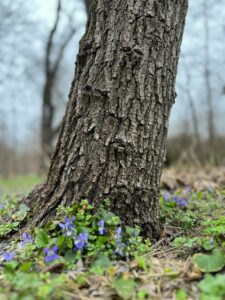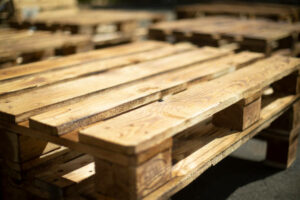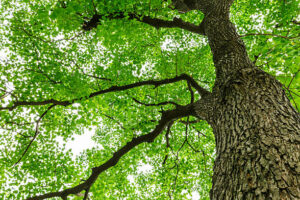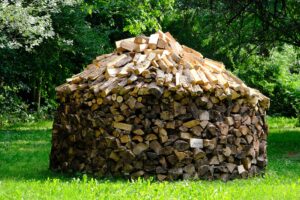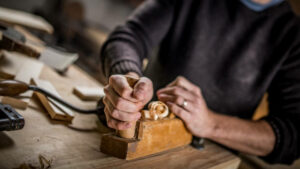Oak is a common wood choice for furniture and homewares. While it is a mainstay in traditional design, oak also looks great in a modern setting. Knowing how to identify oak wood from other wood, will make it easier for you to use it. This article will cover color, grain, smell, and moisture, which are all good indicators of whether you’re working with real oak or not.
Color
Oak wood can have many hues, ranging from orangey-yellow to dark brown. Because of this, it can be tricky to create a paint color palette that will complement it. However, if you’re willing to experiment with colors that have similar undertones, it’s possible. Honey oak can look stunning when paired with the right shade of blue or green. You can even try pairing it with a warm gray or a muted cream, depending on the hue’s undertones.
Identifying oak based on color alone can be difficult, especially if it’s been stained or finished over the years. This is because different staining methods can skew the color of the wood and make it hard to tell what species it is. Additionally, natural aging can alter the color of wood, making it darker or lighter.
Because of this, it’s best to use a fresh, sanded piece of raw oak to identify the species. This will give you a good baseline to work off of, eliminating the chance that stains or natural aging will skew your results. In general, unfinished oak wood will be light brown with a reddish or olive-colored cast. It may also have a distinct grain pattern and straight, narrow rays.
Aside from the color of the wood, you can also look at the bark of the tree to determine what kind it is. The bark of ash trees is smooth and grey, while the bark of oak trees is rough and deeply furrowed. Additionally, oak trees are deciduous, meaning that they shed their leaves in the fall and winter.
For this reason, the most common types of oak wood used in homes are white and red oak. However, more than 60 different oak species are growing throughout the United States, so it’s not always easy to distinguish one type of oak from another based on color alone. Luckily, several other characteristics of oak can be identified by looking at the grain pattern, texture, and smell. Additionally, using a microscope can help distinguish between different species of oak.
Grain
The grain pattern of a piece of wood can be a good indication of its species. Most hardwoods have a noticeable grain, while softwoods are more uniform. The grain of oak is eye-catching and has an uneven texture. However, determining the wood database’s exact grain pattern can be difficult since it depends on many different factors.
First, look at the overall color of the end grain of the wood. If it is a light color, such as amber or off-white, then it is most likely a softwood. Conversely, if the wood is dark brown or black, then it is most likely a hardwood species.
Aside from the color, the grain pattern can also be a strong indicator of the type of wood you are working with. Grain lines can be straight or interlocking and may appear ring-porous or diffuse-porous. Darker rings throughout the grain characterize the latter type of grain.
Another way to determine the species of wood is to cross-cut a thin slice of it and hold it up to the light. Both red and white oak will allow the light to shine through innumerable small holes. White oak, on the other hand, blocks the light, leaving it with a shadowy appearance.
Oak is a durable hardwood that can be carved, cut, and turned to produce furniture. It is also used for building and flooring because of its water-resistance properties. In addition, it is a versatile material and can be stained to match any style or decor.
The best way to identify oak wood is to look at the color, grain pattern, and texture. While this method is not foolproof, it can help you narrow down your options when selecting a species for a project.
Knowing how to identify Northern hardwood lumber based on its color and grain pattern is important for many different applications. The tips below can help you distinguish between pine, basswood, butternut, birch, maple, cherry, and oak hardwood species. The guide includes pictures to make it easier for you to recognize each of these various wood species, based on their color and grain.
Smell
Oak trees can grow quite tall, and the trunks of many species of black oak are thick, often achieving a circumference of 30 feet (9.1 m). This means that even when the tree is cut and split into pieces, it can be difficult to know its identity. Fortunately, certain characteristics can help narrow down the possibilities.
The odor of wood is another key element in distinguishing it from similar species. Though scent is a very subjective characteristic that should not be relied upon as the sole method of identification, it can provide important clues to the type of wood at hand. For example, pine has a strong, distinctive scent; cedar, on the other hand, has a more subtle odor.
Different types of white oak trees and wood also have distinct smells. White oak typically has a pleasant, mild aroma that may be reminiscent of vanilla. Pin oak has a more pungent, earthy odor. Around here, we often use pins for stoops and such because they hold up well in Missouri’s 100+ degree summers. It has a nice, darker heartwood as well.
It’s also possible to distinguish between ash and oak by the bark of the tree, which can help determine whether or not a piece of wood is from an ash or an oak. The bark of ash trees tends to be smooth, while the wood type of oak has rough, deeply furrowed bark. Ash leaves are usually compound, whereas oak leaves have lobes that may be arranged in various patterns.
Another way to determine the identity of a piece of wood is by examining its fluorescence. Some woods, such as hickory and red oak, will glow yellowish under blacklight, while other woods, like maple, will be red, and white oak will not.
Although this method of identification is generally not recommended, it can sometimes be useful when all other methods have failed. First, you will need to acquire sodium nitrite, a chemical that reacts with a wide range of woods. You can find this product online in small quantities, which makes it an affordable and practical option for most. Once you have the chemical, simply brush a small amount onto a piece of wood and wait for a reaction to occur.
Moisture
Oak wood has a long history of use in furniture and home construction. Its durability, weight, and beauty have made it a mainstay in traditional and Craftsman style furnishings and the wood of choice for famed furniture designers like Gustav Stickley and Frank Lloyd Wright. Its strength and endurance have even led some countries to adopt the oak tree as their national symbol.
When freshly cut, the look and smell of oak wood are very distinct. But once the logs are felled, cut, and split, these characteristics can become muddled and harder to distinguish. In these instances, it’s important to consider a few key factors in identifying the wood, such as its moisture content.
Wood’s moisture content is tied directly to the humidity levels surrounding it. When wood is exposed to higher humidity levels, it absorbs more moisture and when exposed to lower humidity, it will lose moisture. As a result, it can take some time for wood to reach its equilibrium moisture content (EMC) in a new climate. During this process, it’s common for the moisture content of the wood to spike and drop significantly in short periods, especially if the temperature is changing rapidly.
For this reason, it’s essential to test the wood’s moisture content before using or cutting it. Whether you’re constructing lumber for a project or simply burning it for firewood, a moisture meter is the most accurate and effective method of testing. A good rule of thumb is that green wood at 20% MC will dry to 5% MC over a few weeks, while seasoned wood at 15% MC will only dry to 7% MC in a similar amount of time.
To test the moisture content of a piece of wood, cut off a small sliver and place it in a glass of water. If the wood lets you blow bubbles, it’s likely white oak. If it doesn’t, the wood is probably red oak.
There are a few chemical tests used in the industry to help separate certain wood types or species of wood based on their ability to absorb or block chemicals. The most commonly used is a 10% solution of sodium nitrite, which is sprayed or brushed onto the surface of the wood and then observed for any color changes or reactions that occur.


